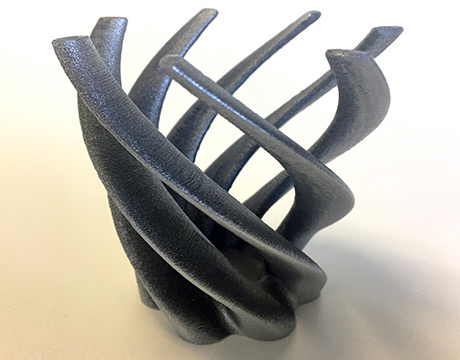3D Printing Technologies Rise to New Levels
3D Printing Technologies Rise to New Levels


A new printer produces parts that have the highest isotropic strength, are watertight, can be sterilized, and provide chemical resistance to acid, acetone, alcohol, and more. Image: Rize
Additive manufacturing/3D printing is a disruptive force in the manufacturing world. Increasingly, it is being used to make parts and products that cannot be manufactured with traditional machining or laser processing methods. A steady procession of new technologies and equipment continues to enter the marketplace. Carbon3D’s “CLIP” technology is an innovative photochemical process that actually pulls a complete, solid product from a melt of plastic material, instead of building it layer by layer, the standard AM approach. Rize is another up-and-coming “next generation” AMcompany. Based in Boston, its patented augmented polymer deposition (APD) technology is a hybrid system that combines two technologies—fused deposition modeling (FDM) and piezo jetting—in a single printer that produces isotropic end-use parts. This process is ideal for rapid and iterative functional prototyping, as well as manufacturing tools, jigs, and fixtures for use in manufacturing.
How APD Works
The APD process involves the simultaneous extrusion of a proprietary medical- and engineering-grade thermoplastic compound with the jetting of functional inks, voxel by voxel (a 3D pixel), through industrial print heads to change the material properties of the thermoplastic during deposition. There are three main steps:
- Printer software automatically prepares the imported CAD file for 3D printing.
- The printer heats and extrudes the thermoplastic support for the piece. A print head jets a special ink in selected locations between the part and the support structure to weaken the bond along this contact. The machine continues to extrude the thermoplastic, layer by layer, until the part is complete. Functional inks are jetted between the layers of thermoplastic to create engineered changes in the material properties.
- The support structure is released easily from the part within seconds, by simply using bare hands. No filing, coating, or other secondary procedures are needed for the part to be ready to use.
Many 3D printing technologies cannot create parts that are as strong in the Z axis (the plane of printing) as they are in the X and Y directions, due to the weaker bonds that form between each layer of material in the Z direction. For most FDM parts, Z strength is reduced by about 40 percent. However, with APD, the parts are nearly isotropic, having almost the same strength in all directions. These parts only experience a 10-percent loss in isotropic properties, making them stronger than parts made from polycarbonate, carbon fiber, acrylonitrile butadiene styrene (ABS), and nylon-reinforced materials.
Other APD advantages are:
- Eliminates post-processing steps, speeds time to market, and saves money.
- Uses safe, non-toxic, and recyclable materials, making it ideal for engineering and design office environments
- 3D prints high-definition text and images onto parts during manufacturing—the ink-marking process enables one-color text and images throughout the build
A Promising Future
Gartner named Rize a “Cool Vendor” for 3D printing in 2017. The system is commercially available and being actively used by NASA, Merck, the Army, and Navy. APD’s ability to fuse variable material properties in the same part opens up new design opportunities for intelligent products and services that could not be considered before.
“This includes nature-like lightweight structures that have an optimized directional weight-to-strength ratio, zero or negative thermal expansion, embedded sensors and actuators, electrostatic discharge dissipation, and electrical conductivity,” says Andy Kalambi, president and CEO of Rize.
For example, many hearing aids on the market today are 3D-printed with stereolithography, which limits the structure of the device to a single material property. Using APD, 3D-printed hearing aids can be manufactured in such a way that the interior channel of the hearing aid is rigid, allowing sound to travel easily along the hearing canal, while the exterior is coated in soft, flexible material so that it fits comfortably in the ear.
“This is the first hybrid 3D printer to combine two discrete processes into one machine to produce parts with variable material properties, which are fused into each part,” Kalambi says. “We continue to work with an ecosystem of material and software partners to develop innovative new materials and capabilities. Not only will these innovations scale across enterprises, they will enable and attract new users who wouldn’t traditionally use the technology, such as start-ups, machine shop owners, and hospital technicians/medical staff.”
Mark Crawford is an independent writer.
This is the first hybrid 3D printer to combine two discrete processes into one machine to produce parts with variable material properties, which are fused into each part. Andy Kalambi, Rize president and CEO





